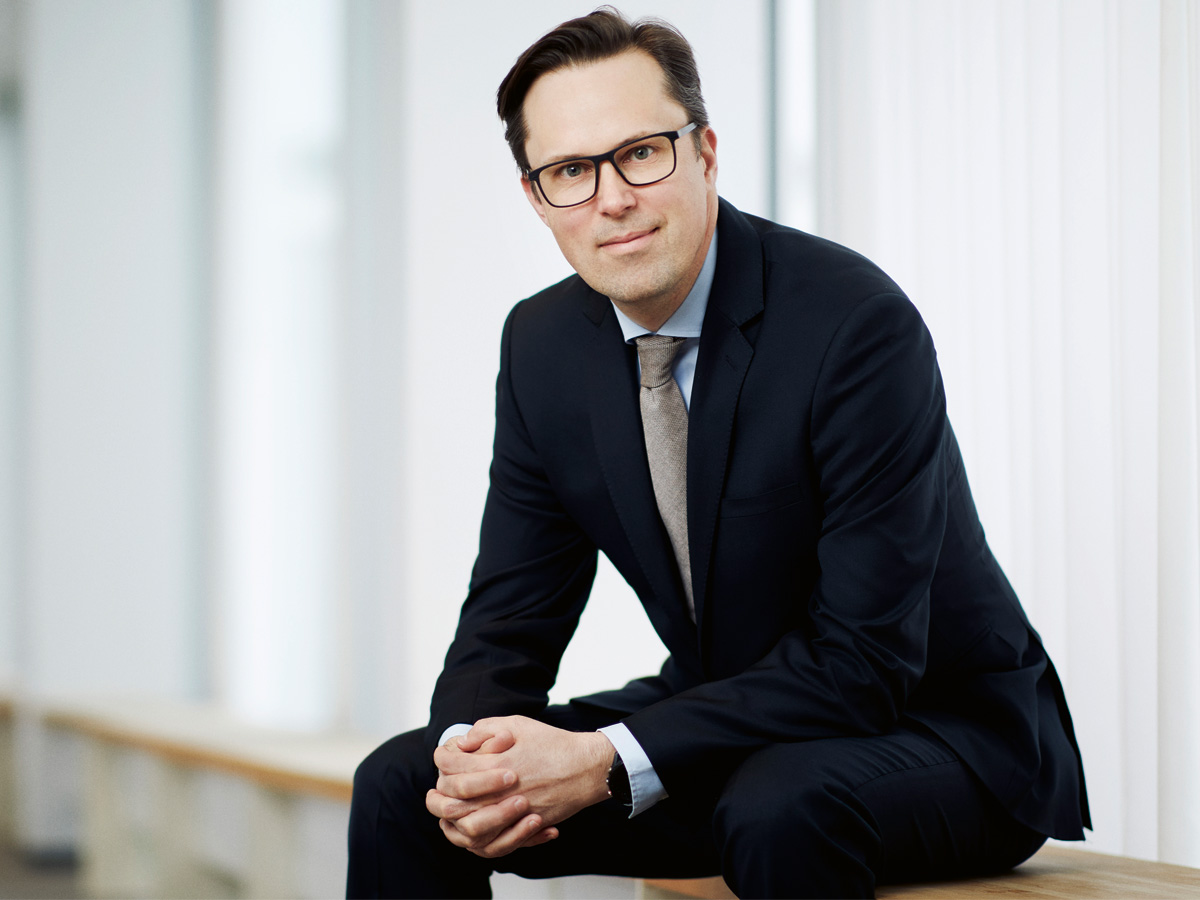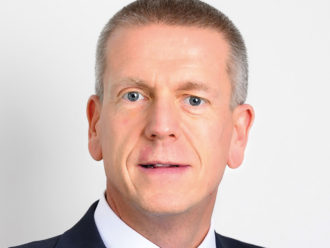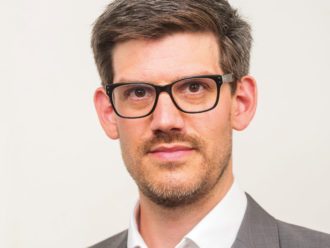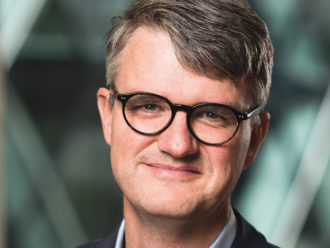What is your investment approach?
Our investment strategy operates through a factor lens targeting four risks: equity, rates, inflation and, what we call, other risk. Within each factor we try to create a global, diversified and balanced exposure. The equity portion consists of Danish equities, globally-listed equities and various forms of private equity.
We try to balance that, given the nature of the way we trade – we do not trade actively in the traditional benchmark sense – as a long-term owner. And when you look at the international portfolio, it is also a risk-balancing tool.
Why do you have an allocation to Danish equities?
There are two reasons. Danish equities have been a fantastic investment during the past 15 years. It is one of the best per- forming asset classes we have.
It is also the nature of ATP. We have an in-depth knowledge of all Danish companies – we know their leadership – and naturally, we know the country very well. We are not big believers in alpha, but one of the places where there is alpha for us is Danish equities, given our insight into the local market.
What exposure do you have to inflation-linked instruments?
The inflation factor is roughly 15% of our risk, so quite a lot when compared to a traditional 60/40 portfolio.
Inflation effectively comes from all our investments. All our investments are measured on their inflation exposures – particularly intuitive is real estate and infrastructure with contracted cash flows.
Are inflation-linked investments proving effective in the current environment?
Two years ago, rates were the best we had for a long time and inflation had been flatlining for quite a while. Over the past three to five years, inflation has been the best performing factor we have.
The inflation risk has not been enough to balance out what we have lost in the past couple of years in rates. We have roughly 35% in rates, but it has taken a lot o the top of the losses in the rates portfolio. So, in that sense, the strategy has been work- ing as expected.
Given the outlook for inflation, will this segment increase?
No. ATP’s long-term strategy is to target a factor balance. Given what has happened to rates this year, they are starting to look more appealing than they did a few months ago.
So, the focus will be on the long term?
Yes, we try to create a balance. We are not active investors in that sense. We try to use our risk capacity as well as we can within a relatively stable underlying portfolio. So, we scale our risk more than we try to beat the market or a benchmark.
Given the size of ATP, it is hard to be a nimble hedge fund operation. It is very much about efficient beta and being a long-term investor. Making sure we have the right amount of risk on.
What about private equity? You have been exposed for 20 years, so where is your focus?
We have been in private equity successfully for a long time. We invest across various approaches. For example, we have a subsidiary, ATP Private Equity Partners, which has been a highly-rated fund for many years. We also have co-investments and invest directly from our global direct investments team.
We believe private equity will create value. Some of the concerns we have though are around fees and alignment of interest.
You have a large allocation to infrastructure. What are your big projects?
We are invested in infrastructure via funds, but also directly. The overall themes have been regulated contracts, inflation protection, stable cash flows: it is the traditional airports and roads.
That said, one particular big project is the Energy Island that the Danish government intend to build in the North Sea, where ATP in a consortium with Ørsted intend to bid.
For more private equity like investments into the green transition, we are obviously targeting smaller tickets, with a higher element of risk or a different risk profile from the traditional contract infrastructure.
Overall, our climate ambitions are to invest Kr.200bn (£23bn) by 2030.
Real estate has also long been part of your portfolio – what does it involve?
Yes, we have been invested for more than 50 years. We have a subsidiary, ATP Real Estate, which has 130 employees operating one of Denmark’s largest real estate portfolios. We take care of everything from the management and development of the assets – the whole value chain within real estate.
A lot of our focus has been within Denmark. For our global portfolio, it has been more of a partnership approach, with select global asset managers where we team up on projects
On your credit segment, presumably it is part of the factor approach?
This goes into our equity risk factor. We have had a substantial credit portfolio – in private markets and listed credit for many years. We are also quite a large credit investor in the derivatives markets. Our latest project internally is to implement a green bond corporate credit portfolio.
A big negative tranche is government and mortgage bonds, which appear to be failing to fulfill the normal fixed income role?
This is part of factor investing. We need to balance our equities. A lot of people misunderstand what we mean about rates: we are talking about the carry and roll, not the level. This year has been particularly bad. Probably the worst year for fixed income in modern history. But over time, it serves its purpose.
If we are looking at the stagflation environment that everyone is talking about, then a lot of the factors will not perform. The question is then not whether we should have a balance between equities and rates, but whether we should be heavily risk on.
What are the “other risks” you spoke of?
For the past 25 years we have been wanting to minimise complexity. If we can accept the complexity and be properly compensated, we will do it. So, this is all of that. ‘Other risks’ includes factors such as illiquidity, structuring, legal a airs and risks that are more esoteric than the three macro factors.
Your approach successfully returned 35% last year. What do you put such a strong performance down to?
ATP has a two-fold approach: we have a large hedging portfolio and an investment portfolio.
When it comes to the hedging portfolio – the objective is to hedge liabilities 100% – removing all the market risk from guarantees in the life-long defined benefit scheme.
In the investment portfolio, we apply leverage to reach a high risk level. So, it is a great return, but we also take a lot of risk.
Have there been periods when the factor investing approach did not work?
It depends how you define “did not work”. Any strategy will lose money. What we can say is that despite the Covid situation, inflation and Ukraine crisis, the strategy has performed as we expected it to. It has done what we told the board it would. This approach has worked within our expectations.
According to your annual report, you seem to be more realistic on your return expectations going forward. How will that translate into numbers?
Our long-term expectations have been adjusted down a little, but we still have quite a high return target for our investment portfolio given the amount of risk we take. We still believe long term there is going to be attractive risk-adjusted returns.
We do not think the absolute returns will be as high, given the level of rates. And we have a lot of pressure from inflation, but we see no reason for not being involved in long-term risk taking either. We still think equity will be compensated fairly and a Sharpe ratio of around 30% is realistic. There is no reason why a long-term investor should not be able to get that.
You have touched on elements of ESG. What is your approach to the various challenges presented by integrating such factors?
We have been working on ESG for about 12 years now. We have quite a large internal team. From the beginning we have tried to focus our resources on a limited number of resources and to do them well. I would say we have been one of the front runners in this area. In our investment belief it is effective integration within the whole organisation. It is a preference for active ownership, making a difference.
We do not run our ESG strategy to become the ‘greenest of the green’. We believe in investing in the transition. In the long- term there is going to be a good risk-return trade off in investing in companies that take their ESG responsibilities seriously.
What do you expect to see in your investment portfolios in the coming years?
Last year Denmark’s government approved changes to our business model. We are looking to implement them in the next couple of years. It is quite a big project. It has changed the underlying product, changed the way we are going to invest our existing money.
So, it is about managing that transition without disturbing our investments and the day-to-day running of the fund. We will then have to consider if there is anything we need to fundamentally change about our strategy. So far, we have been doing okay.
ATP IN NUMBERS
Investment returns in 2021: Kr.49.6bn (£5.7bn)
This consisted of:
Listed Danish equities: Kr.7.6bn (£870m)
Listed international equities: Kr.14.6bn (£1.68bn)
Inflation-related instruments: Kr.24.6bn (£2.83bn)
Real estate: Kr.3.5bn (£400m)
Private equities: Kr.13.5bn (£1.55bn)
Other items: Kr.900m (£100m)
Infrastructure: Kr.2.4bn (£280m)
Credit: Kr.2.6bn (£300m)
And one negative performance:
Government and mortgage bonds: (Kr.20.1bn) (£2.31bn)
MIKKEL SVENSTRUP’S CV
2020: Chief investment officer, ATP
2017: Investment director
P+ (Pension fund for Akademikere)
2012: Sales director, Nordea
2010: Executive sales director, UBS
2005: Global distribution director Barclays Capital
ATP’S FACTOR STRATEGIES
Equity: 35%
Rates: 35%
Inflation: 15%
Other risks: 15%





Comments